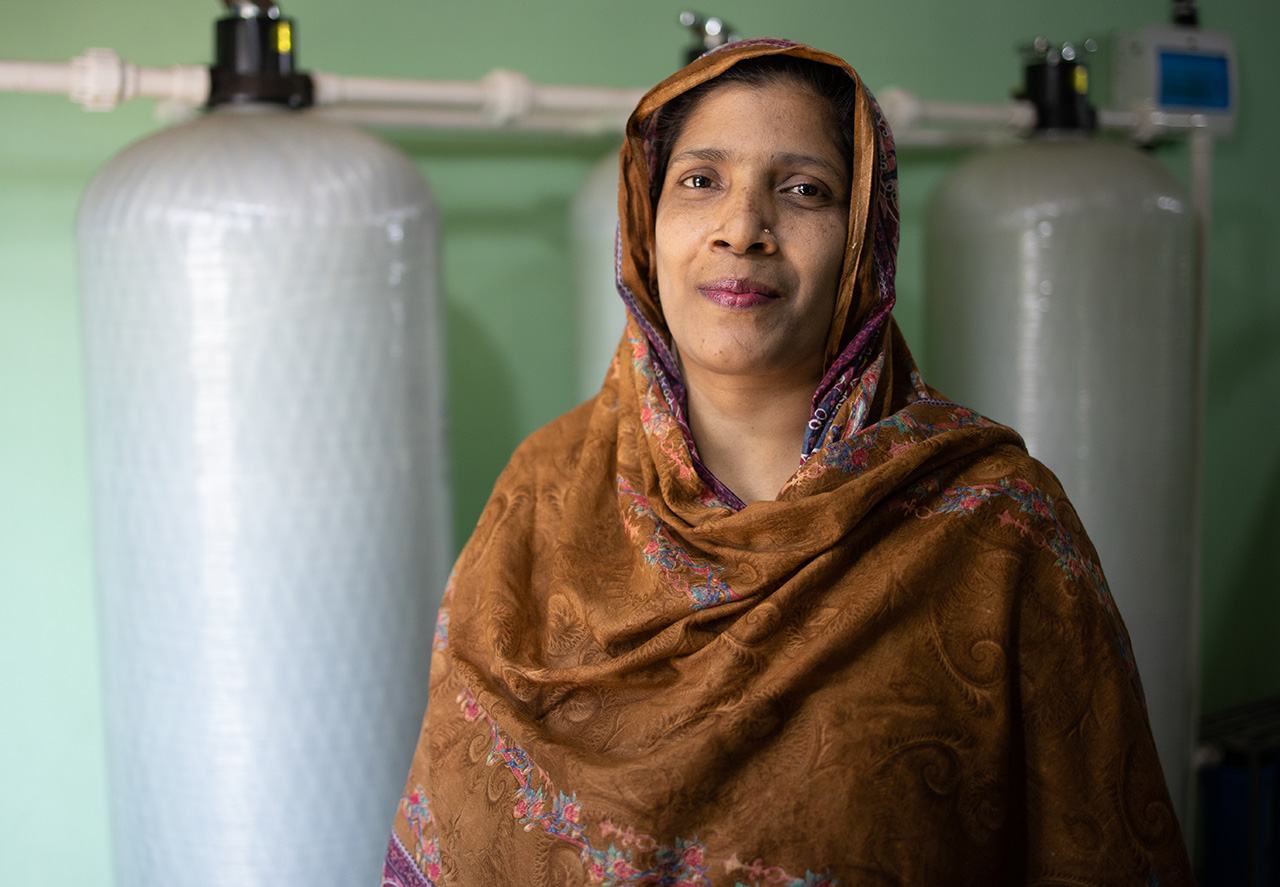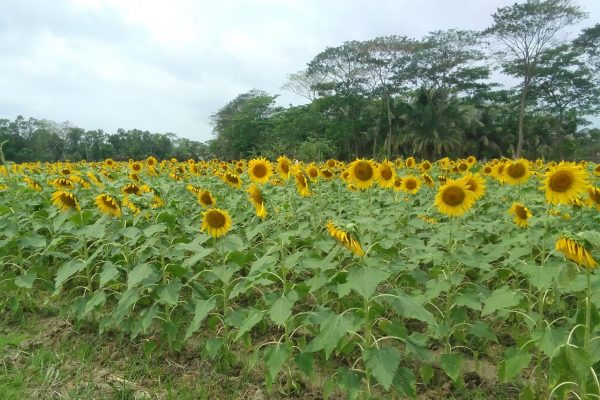An island in Bangladesh is facing a water crisis. This is how people are taking control.
Reading Time: 3 minutes
Rising salinity has sparked a water crisis in Bangladesh’s coastal areas, where millions of people lack adequate access to clean water. Local water entrepreneurs in Moheshkhali are fighting back.
For the first time, I did not get motion-sick during the 25-minute speedboat ride over the choppy waters of the Bay of Bengal to Moheshkhali, a remote island in Cox’s Bazar, southeast Bangladesh. My eyes were fixed on the picturesque island, a dark-green blob against the bluish-grey sea. As I set foot on the island, however, I was not ready to witness the stark challenge that the 257,000 inhabitants of Moheshkhali constantly face – a shortage of safe drinking water.
Walking for water
Growing up in Moheshkhali, Meena Begum struggled to access what many people on the mainland take for granted: clean drinking water. Her family had to collect as much safe water as they could in buckets. Today, she and her two daughters trek three kilometres daily from their house to a local pond to collect water.
Salinity in Bangladesh, including non-coastal areas, has grown by roughly 26% in the past 35 years. Even though Moheshkhali is surrounded by water, and there are plenty of water sources on the island, the inhabitants struggle to find safe water to drink. Rising salinity has become a pressing issue for people living in poverty in coastal regions such as Moheshkhali over the last few decades. People largely rely on shallow wells and ponds, which are frequently contaminated by salt water, eventually becoming unfit for human consumption. The sweet water supply on the island is also dwindling due to the constant incursion of saline water.
Like Meena , most women on Moheshkhali endure long daily routines just to secure water for their families. “I spend an hour a day carrying water. Even then, water-borne diseases are common in my family”, says Jahanara Keya, a mother of four children.
People living in salinity-prone areas are 10% more likely to suffer from water-borne diseases than people living in low-salinity areas.

Clean water from water treatment plants getting ready to be delivered. Photo credit: 2021 © BRAC
A thirst for solutions
The people of Moheshkhali have faced gradually worsening water scarcity for decades. In response, some have decided to take matters into their own hands – by becoming water entrepreneurs.
With training and a loan from BRAC’s water, sanitation and hygiene programme, seven people have launched their own businesses in Moheshkhali to deliver safe drinking water, through the installation of advanced water treatment technology.
Aspiring water entrepreneurs can get technical training and a loan ranging from BDT 200,000 to BDT 500,000 (USD 2,300-5,800) to install reverse osmosis-based water treatment plants on the island.
A reverse osmosis water treatment plant removes pollutants from water by forcing it through a semipermeable membrane under high pressure. This is particularly useful in Moheshkhali because of the high salinity and iron in the water.
Seven such water treatment plants have been set up in Moheshkhali through BRAC. These plants have been helpful in addressing the island’s water shortage, while helping to improve the health of the community. Water quality is tested during installation of the facilities and regular tests are carried out.

Kawsar Parvin, the first woman water entrepreneur in Moheshkhali, southern Bangladesh. Photo credit: 2021 © BRAC
The island’s first female water entrepreneur
Kawsar Parvin, a mother of three, stepped up to become a water entrepreneur in Moheshkahli, making her the first woman owning a business on the island.
“There is rising demand for clean water in my community and I saw it as a chance to help people and make a living out of it”, says Kawsar. She set up her water treatment plant with her savings and a loan from BRAC. Her team currently consists of two other people, who, along with other water entrepreneurs, received training on how to establish a water enterprise, as well as machine maintenance support from BRAC.
It has been almost nine months since Kawsar launched her business. Her plant produces 1,000 litres of water per hour. She sells the water in 20-litre jars, for the subsidised price of BDT 30 (USD 0.35) per jar. On average, Kawsar’s water treatment plant provides water to approximately 400 households every week.
“I keep a recorded video in my phone, which shows how this water is packaged, so people can see how safe it is”, says Mohammad Delwar, who distributes 70 jars of water daily from Kawsar’s plant.
Kawsar’s story is inspiring other entrepreneurs in Moheshkhali, and giving rise to a renewed optimism – that the island’s water crisis can be tackled by the community. As more people have access to training and support, women in particular can be instrumental in this, working towards a future where no one has to walk for water.
The BRAC Water, Sanitation and Hygiene (WASH) programme has made a critical contribution to sanitation in Bangladesh, reaching half the country with services. It has helped over 41.62 million people gain access to hygienic latrines, reached 13.9 million people with hygiene education, and 2.3 million people with access to safe drinking water. Targeted water and sanitation financing, entrepreneur development and financing, loans for people living in poverty, grants and water subsidy for the people living in ultra-poverty, along with motivation for self-financing has ensured equal access for all wealth categories. To learn more about BRAC’s approach, visit the WASH Programme’s website. Find more blogs on what BRAC is doing in WASH on The Good Feed.
MD Yazdani is a Communications Specialist at BRAC Communications.





